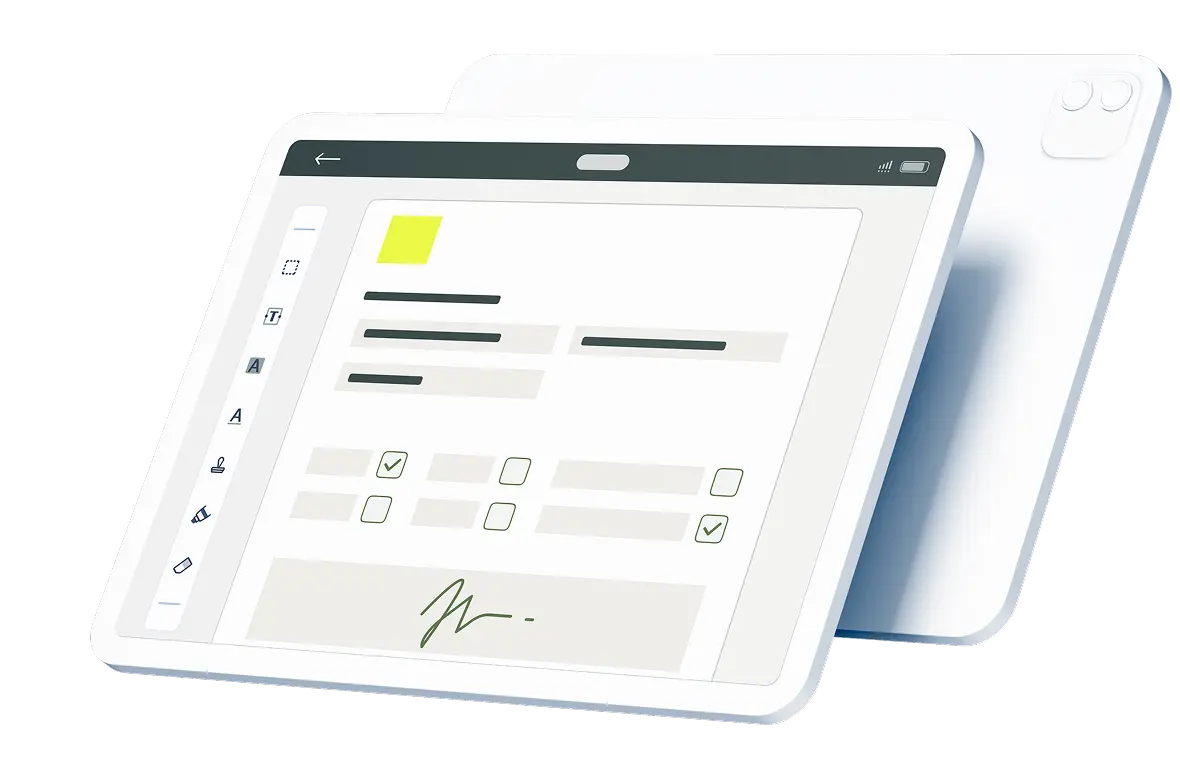When it comes to superior construction management, communication is key. A contractor communicates regularly with other interested parties for the duration of the job, including the owner, an architect or engineer of record, subcontractors, and perhaps a consultant providing oversight on the owner’s behalf.
These information exchanges may take the form of coordination meetings, progress reports, phone conferences, emails, text messages, and document construction submittals. One of the most common and most important documents for a construction project is a request for information. The RFI process is a part of nearly every construction project, regardless of type, size, scope, or location.
Contents:
What Is an RFI in Construction?
Requests for information can mean different things in different contexts. Within construction, an RFI is when the contractor or builder submits a request for additional info concerning the work to be done. If a contractor has a question or problem that impacts proceeding with the scope of work, he or she formally submits an RFI either to the owner, owner’s representative, or designer for an official response.
A construction RFI should not be confused with an RFI in procurement. In that scenario, a client may submit an RFI to various suppliers to gather info and determine which provider can best fulfill a need.
Why Do I Need an RFI Form?
While verbal communication may suffice for phone calls and virtual or in-person meetings, it’s not sufficient for a request for information. An RFI must capture the construction company’s specific inquiry about the scope of work or execution of the contract. Similarly, the response to the RFI must also be formally recorded, whether it’s from the owner, the architect or engineer, or other stakeholders. Even when the response is a simple yes or no answer, it directly impacts the next steps for the contractor.
An RFI often results in additional activities such as a change to the scope of work, budget, or schedule. It’s in everyone’s best interest for the RFI to be submitted, reviewed, and responded to with documents that are a part of the official record. In the event of a claim, liquidated damages assessment, or litigation, you’ll want more than verbal communication as backup.
Why Do I Need an RFI Form?
While verbal communication may suffice for phone calls and virtual or in-person meetings, it’s not sufficient for a request for information. An RFI must capture the construction company’s specific inquiry about the scope of work or execution of the contract. Similarly, the response to the RFI must also be formally recorded, whether it’s from the owner, the architect or engineer, or other stakeholders. Even when the response is a simple yes or no answer, it directly impacts the next steps for the contractor.
An RFI often results in additional activities such as a change to the scope of work, budget, or schedule. It’s in everyone’s best interest for the RFI to be submitted, reviewed, and responded to with documents that are a part of the official record. In the event of a claim, liquidated damages assessment, or litigation, you’ll want more than verbal communication as backup.
What Goes Into an RFI?
Typically, an RFI is created and submitted by the builder, so it is usually up to the contractor or PM to create a construction RFI template for use on a project. Having a template provides a consistent way of capturing the pertinent details of this information request. It also makes it easier to provide guidance or consensus on how to do an RFI in construction with a form. Your Request for Information document should include these details:
- Signatures: RFIs should be signed by the submitter, usually the project manager, and the respondent.
- Construction company name: The contractor’s information, including company name, address, and logo, should be at the top of each page. An RFI is an official form of communication between one entity, so it should appear as formal as a business letterhead.
- “Request for Information”: The RFI form should clearly be identifiable as an RFI, and not confused with other documents such as submittal cover letters and change order requests.
- Project Information: The name of the project, any contract or work authorization ID numbers, client information, and other details should be in your template. Including an RFI with the wrong contract should be avoided.
- RFI ID: Each RFI on a project should have its own number. Start with the number 1 and consider using at least three digits for this field (e.g. “RFI 001”).
- Date of submission: Capturing the date of the RFI is critical. If a delay in response impacts the contractor’s schedule, the date of submission will factor into potential time claims or contract changes.
- RFI importance: Some RFIs are critical and an expedited response is necessary. A designation of high, medium, or low works here.
- Requested response date: The contract or specifications may have a recommended time frame for RFI response (e.g. 7 days), but if the contractor needs a response sooner than the default, specify that here.
- Description of RFI: This is where the contractor makes the request, which should be straightforward and to the point.
- RFI type: Depending on the complexity of the project and how it’s funded, the owner may want to categorize RFIs.
- Reference Info: If the inquiry is a result of a particular plan sheet, spec page, or other contract documents, include that here.
- Recipient: An RFI about the blueprints or drawings may require a response from an architect or engineer or record. An RFI about the contractor’s means and methods may require a response from the owner or owner’s representative for acceptance. For your RFI process, all information requests may go through one person, but noting the intended recipient helps establish a trail for resolution of the issue.
- Supporting information: The construction PM can include sketches or supporting details to explain their RFI that aids the recipient in preparing a response.
- Response: Think of the RFI form as capturing the entire progress of this issue, so the official response should be provided in a field.
- Date of receipt, review, and/or response: Similar to the submission date, the RFI must include these dates for the project record.
- Follow-up actions: RFIs often result in a request for proposal (RFP) and a change in the contract. Note the RFP number and change order number here for auditing purposes.
What Types of RFIs Are There?
Depending on the complexity of the project and how contractual changes are funded, you might need to make note of the type of RFI. For example, an RFI that comes as a result of an error or omission in the plans may lead to a change order to be paid for out of a contingency fund. A change that comes from an RFI originating with the contractor’s approach may not be funded at all, requiring the contractor to eat the costs.
Common RFI types include these:
- Design: Based on oversight or mistakes in plans, clarification of plans or specs, or adjustments to design to fix a field or contractor error
- Schedule/Phasing: Reordering or rephasing of work or activities due to labor and material shortages, inclement weather, or other reasons
- Materials: RFIs related to the substitution of materials or pay items that provide an advantage to the contractor, the client, or both
- Means and methods: Changes to construction approach or installation procedures
- Scope: Addition or deletion of work to the contract
- Field or site condition: Discrepancies between actual site conditions and what was indicated in original contract documents
- Utility conflict: Related to an existing utility underground or overhead that is in conflict with proposed work
- Stakeholder: Concerns impacts to the proposed work arising from coordination with other stakeholders such as adjacent property owners, utility owners, and the public
- Other/Miscellaneous: RFIs that don’t fall into other categories
What About the RFI Process?
Besides creating RFIs, the process should be clearly defined before the project starts. Who creates the RFI? Who receives the RFI? How is it directed to the appropriate reviewer? How are responses communicated back to the contractor? What about follow-up actions? These are questions that should be answered by a complete RFI process.Generally, the construction company’s project manager or coordinator is responsible for filling the RFI form and sending it to the owner’s representative, which may be a consultant provider or other staff. That person will then direct the RFI to the appropriate reviewer, including the designer, a materials inspector, a utility coordinator, external stakeholder(s), etc.
Time is of the essence when it comes to RFIs. Remember the contractor needs an answer to proceed with the work, so the process must be streamlined and decisive. Nearly any construction project needs an RFI construction log as part of the phase of construction process. Each RFI is identified in sequential order, capturing the description, the dates of submission and response, the type, the responsibility, and the status (open or closed). Project coordination meetings should include a review of the RFI log, a discussion of open or unresolved issues, and an action plan for resolution. In an improved construction process, critical and outstanding RFIs would be flagged for attention.
When an RFI is resolved, either through a simple response, or the following RFP or change order, it needs to be formally closed with the concurrence of resolution by all parties. A document control manager, record keeper, or auditor verifies that all documentation is correct and complete. It’s in everyone’s best interest for the complete progression of the RFI to be formally recorded and completed.
How Does Fluix Improve the RFI Process?
Fluix is a powerful, cloud-based construction field software that provides specific advantages to work processes, including electronic document creation, completion, distribution, and automation. It is accessible on any laptop or mobile device, with no need for specific operating systems or coding requirements.
Create your RFI form and automate a workflow that routes each document to all involved. You can send notifications for critical and outstanding issues. Take your RFI management to a better level with Fluix.

